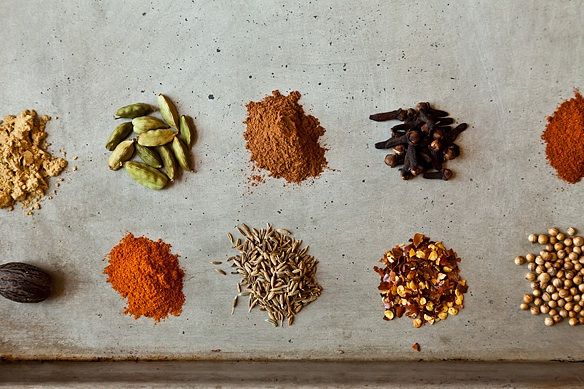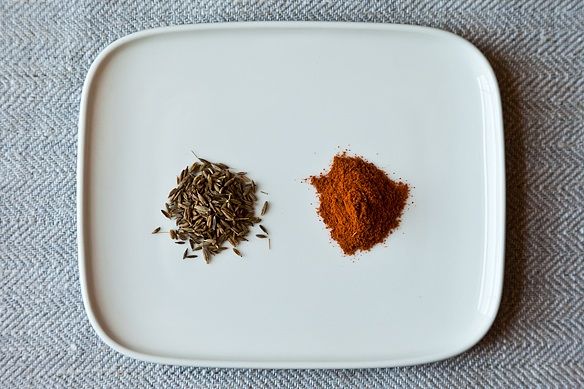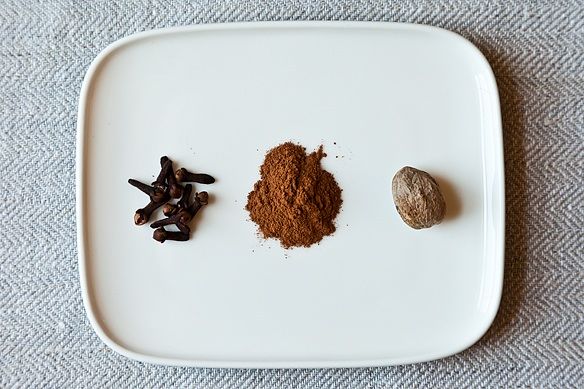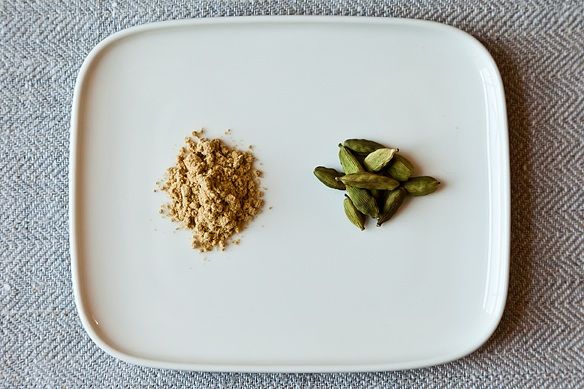Popular on Food52
Continue After Advertisement
38 Comments
bodhi M.
March 22, 2014
little tip: my sicilian american grandmother always added 4-6 red pepper flakes (no seeds!) when cooking white rice (usually arborio but not exclusively), whether cooking with water and salt or with 1/2 swanson chicken broth and 1/2 water the red pepper gave life to the rice without really adding heat. just be careful not to over do it as i did for years! lol
Chris C.
April 29, 2012
Bellissimo! I had a very difficult time with all theses spices last time I crossed the Atlantic!
Stinky
April 27, 2012
I find coriander frustratingly hard to grind. Any hints?
AntoniaJames
May 29, 2012
I also use a coffee grinder. I have found that the slightly green coriander seeds, as opposed to the light brown ones, available at Indian grocers don't grind (even in an electric mill) as well as the brown ones. I usually sift it, either way. ;o)
Jeno W.
April 26, 2012
I'm attending culinary school and we just finished our spices chapter! The pictures are gorgeous. Thank you!
davidpdx
April 26, 2012
Nice list; certainly rings true in our kitchen. One way we use several of the 10 (cumin, cayenne, pimenton) is to make simple savory and not-too-rich dipping sauces for steamed artichokes. Thin some low-fat (not non-fat!) mayonnaise with a bit of water to desired consistency; stir in an amount of one of the ground spices to whatever intensity tastes good to you; and dip and scrape away!
Pegeen
April 25, 2012
p.s. Any reason articles like this can't be saved to our personal recipe collections?
Pegeen
April 25, 2012
Great list - thank you! Tip: hang out in the "C" section of the spice aisle. Note how 7 out of 10 handy spices begin with the letter C? (I confess I'm counting "chile" for red pepper flakes.) Sorry... I'm a list geek who thinks cleaning closets is fun. Anyway, this is very useful for some new cooks I know... thanks!
shila.soni
April 25, 2012
A very nice list! I love tossing cumin seeds with roasted cauliflower/broccoli (genius idea from melissa clark!) or any spiced dish really, and cardamom in baked goods, tea, and coffee. I love, love, love a pinch of cardamom in spiced mustard greens or collards too.
Ayurveda (traditional indian medicine) says that spices are medicine, and I believe it!
Ayurveda (traditional indian medicine) says that spices are medicine, and I believe it!
Katie
April 25, 2012
I would definitely agree with your list of 10 essential spices; those are the 10 I use and love most. I love to use coriander in my homemade green chile sauce but had no idea that it was the seed of the cilantro plant. That's amazing! Now I can finally trace the faint hint of cilantro in my enchiladas! Thank you!
AntoniaJames
May 29, 2012
Katie, when I was growing up, what everyone calls "cilantro" was always referred to as coriander! ;o)
nowara
April 25, 2012
I often add whole cardamom to the water when boiling chicken (I also add cinnamon sticks, bay leaves and cloves). It makes for a wonderfully fragrant and tasty stock that I use instead of plain water when making rice.
I love to drink Turkish coffee and I often add ground cardamom before preparing it.
Cumin is often used in middle eastern dishes that include chick peas, fava beans, lentils, etc because it is supposed to aid in digestion.
I love to drink Turkish coffee and I often add ground cardamom before preparing it.
Cumin is often used in middle eastern dishes that include chick peas, fava beans, lentils, etc because it is supposed to aid in digestion.
Antonine
April 25, 2012
My favorite cardamom recipe is potatoes mashed with butter, cream cheese and cardamom. My kids request it for every holiday dinner.
sir_ken_g
April 25, 2012
Good list. i have them all and probably 60 more.
Tips:
1) Buy whole if that makes sense.
2) Avoid grocery store spices - way over priced. You can often get much better prices in local ethic stores if you are lucky - or on-line in bulk.
Tips:
1) Buy whole if that makes sense.
2) Avoid grocery store spices - way over priced. You can often get much better prices in local ethic stores if you are lucky - or on-line in bulk.
Stefanie S.
April 25, 2012
Fennel seeds are essential to my cooking - from a hint of Italian sausage in a tomato sauce to layer flavors when cooking fresh fennel.
And I prefer mace to nutmeg in everything except eggnog!
And I prefer mace to nutmeg in everything except eggnog!
orlenda
April 25, 2012
my fave spice is garlic powder-no fussing with fresh garlic but plenty of great flavor!
believe it or not, i add cinnomon to foods i find too spicy and it calms teh falovr down for me...
Cinnomon is also great in a red sauce....(pizza, pasta)
believe it or not, i add cinnomon to foods i find too spicy and it calms teh falovr down for me...
Cinnomon is also great in a red sauce....(pizza, pasta)
Margaret M.
April 25, 2012
My "new" favorite spice is star anise. Sometimes I just open the jar on the counter and smell it. It is so beautiful and aromatic! Also love ginger and green cardamom -- have been making a lot of Chai lately. Thanks for this lovely list. We love fresh cilantro and "need" to experiment more with dried coriander. :D So many spices, such little time.
Katie S.
April 25, 2012
Great list. I'll be sharing it on my FB fan page. I'd also have to throw turmeric into this spicy mix. It adds amazing color and love the earthy aroma.
Meatballs&Milkshakes
April 25, 2012
I'm a big fan of aleppo pepper-- I think it has more flavor and less heat than cayenne. I like using it with paprika too.
LA2LAChef
April 25, 2012
Glad Cumin made your list, but how odd that you would not mention that it is used in Mexican cuisine, to which it is essential!
Rupal P.
April 25, 2012
At first I was also wondering where the herbs were until I saw the comment trails below. This is an interesting and certainly relevant list. Although I've never been a big fan of red pepper flakes (except for sprinkling on pizza), I can see why it's on the list and it is certainly in my cabinet. I also prefer fresh ginger over ground ginger for cooking savory items.






See what other Food52 readers are saying.